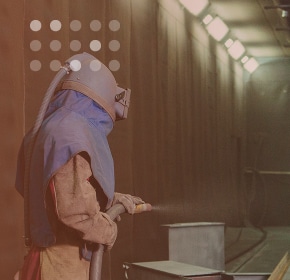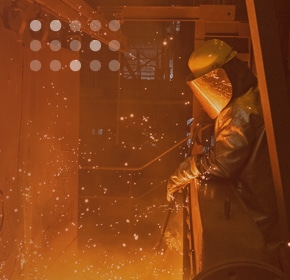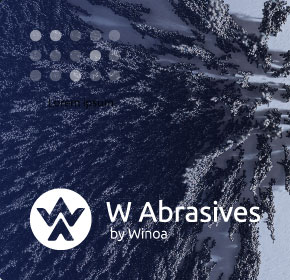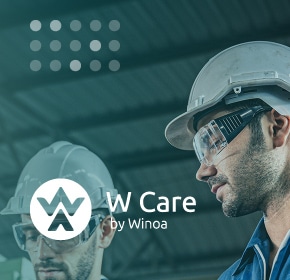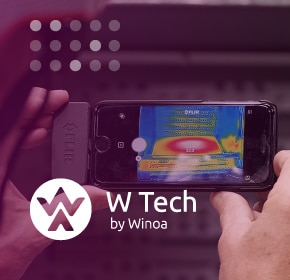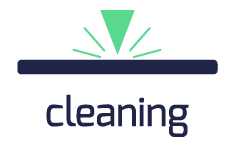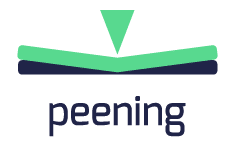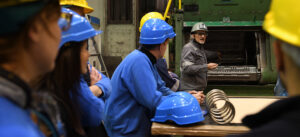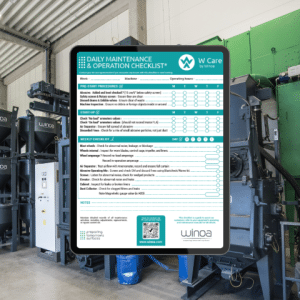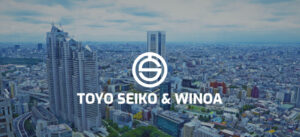#shot blasting#ShotPeening#steel blasting
What is the difference between shot peening and shot blasting?
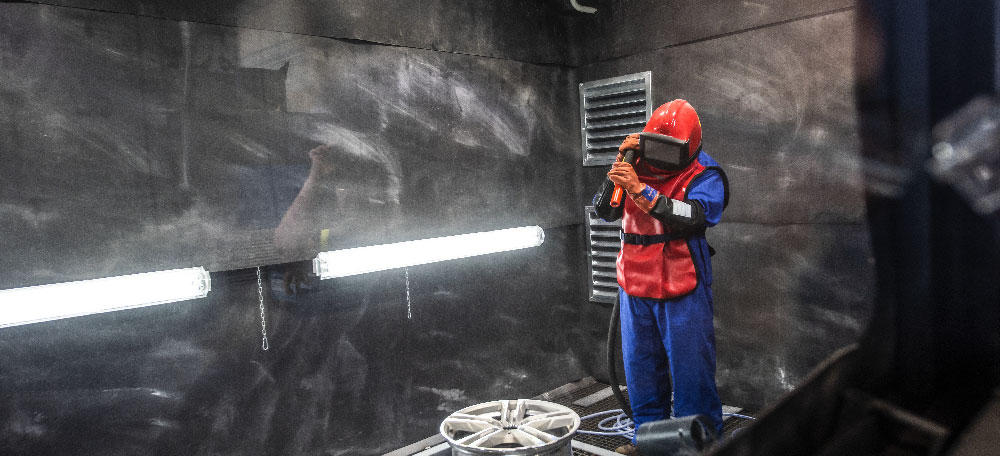
In modern industry, metal surface treatment is crucial to enhance the performance and longevity of parts. We are often asked about the difference between shot blasting and shot peening.
These two techniques differ in their objectives and methods. Although both use particles propelled at high speed, they address very different needs. Let’s explore their characteristics, applications, and differences in detail.
1. Definitions and Objectives
Shot Blasting and Shot Peening
1.1 Shot Blasting: Cleaning and PreparationShot blasting is a mechanical cleaning technique that projects abrasive particles, whether round or angular, onto a surface to be treated. Mainly used to remove rust, paint, and other contaminants, this method efficiently prepares metal, concrete, and other substrates for subsequent processes, such as machining, deburring, bending, or applying a protective coating or paint layer.
The ISO 8501-1 (surface cleanliness degrees) and ISO 11124-2 (abrasive specifications) standards are often used to ensure quality results. 1.2 Shot Peening: Strengthening and ProtectionShot peening is not for cleaning, but for strengthening metal surfaces. By projecting spherical balls at high speed, this process creates small indentations that introduce compressive stresses. This increases fatigue resistance and reduces the risk of cracks. For example, this process can increase the lifespan of a metal component subjected to cyclic forces by more than 30% when applied correctly.
Standards like SAE J443 (intensity control) and AMS 2430 (material and procedural requirements) ensure process precision and reliability. |

|
2. Major Technical Differences
Processes and Your Needs
2.1 Type of Impact
- Shot blasting: Uses round or angular particles to scrape and remove dirt, contaminants, or to create a textured surface. This type of impact works by abrasion, effectively removing layers of contaminants and preparing metal for finishes like painting or coating. The choice of abrasives and their size directly affects the outcome, especially the final roughness and execution speed.
- Shot peening: Uses strictly spherical shots to create uniform indentations without damaging the surface. These indentations introduce compressive stresses beneath the surface, enhancing durability and resistance to fatigue. The size, speed of the shots, and projection angle are calibrated to prevent excessive deformation or cracking.
2.2 Energy Used
- Shot blasting: High energy is applied to quickly dislodge contaminants. This allows coverage of large areas in a short time, but the process must be adjusted based on the substrate’s hardness to avoid unnecessary damage. For instance, a typical energy of 300 J/m² is used to clean metal surfaces.
- Shot peening: Energy is calibrated to strengthen without altering the part. Preliminary studies determine the optimal intensity and required thickness of compressive stresses, ensuring uniform treatment. Generally, an intensity of 100 J/m² is sufficient for standard industrial parts.
2.3 Process Control
- Shot blasting: Simple control, often manual, based on visual inspection. This includes checking the cleanliness and roughness of the surface post-treatment. For critical applications, roughness tests are sometimes conducted to ensure the surface meets specifications.
- Shot peening: Automated process with precise measurements of intensity (Almen curves) and coverage. Parameters such as shot speed, density, and flow are controlled in real-time to ensure a uniform result. In aerospace, coverage control above 98% is often required, with a strict intensity tolerance of ±10%.
3. Comparison of Uses
Key Differences
“`html
| Criterion | Shot Blasting | Shot Peening |
|---|---|---|
| Objective | Cleaning, surface preparation, creating roughness for coating adhesion | Strengthening through compressive residual stresses to enhance resistance to fatigue and corrosion |
| Materials | Spherical particles (shot) and angular ones (metallic or mineral abrasives) | Spherical beads (metal, glass, or ceramic) for uniform and controlled impact |
| Industry | Construction, industrial painting, metallurgical industries, and foundries | Aerospace, automotive, energy (turbines, springs) |
| Cost | Generally more economical due to less complex processes | Higher because of strict control and precision requirements |
| Technology | Manual, visual control, regulated pressure for cleaning | Advanced automation with precise control systems (intensity, coverage, impact time) |
| Roughness | Creation of surface profiles to improve coating adhesion (often measured by comparators or replica tape) | No rough profile desired, but uniform surfaces to reduce micro-crack risks |
| Emissions and Environment | Dust and particle risks requiring filtration systems | Fewer particles generated due to controlled impacts, but higher energy required |
| Material Lifespan | Reduces residues like rust, increases the lifespan of protective coatings | Extends mechanical life of parts through introduction of compressive stresses |
| Specific Applications | Cleaning before painting or galvanization, removing scale and rust | Reinforcement of areas subject to cyclic fatigue: aircraft wings, drive shafts, blades |
| Abrasive Used | Metallic abrasives: shot, steel, iron, Premium steel abrasives. Non-metallic abrasives: garnet, glass grit, plastic.. |
Peening spherical beads: Stainless steel shots, glass beads, ceramic, AMS carbon steel, Conditioned cut wire… |
Additional Technical Points:
- Kinetic energy of particles: In shot peening, beads are accelerated to precise speeds to generate optimal stress without excessive deformation.
- Monitoring: Shot peening requires advanced monitoring systems such as Almen intensity tests to verify effectiveness.
- Regulations: Both processes must comply with industry standards, especially those defined by AMPP and ISO (ISO 8501 for shot blasting, SAE J2441 for shot peening).
“`
4. To explore further
Stay informed
To deepen your knowledge, here are some related topics that will be written shortly:
- Challenges and Solutions in Shot Peening Coverage Control
- Understanding the importance of complete coverage to avoid under-treated areas.
- Methods to assess and optimize coverage, including the use of Almen curves and standardized protocols.
- Innovations in Shot Blasting
- Advancements in recyclable abrasives.
- Comparison of Abrasives
- The benefits of steel, glass, or ceramic abrasives.
- Which materials for which industrial shot blasting applications?
- Successful Projects in the Automotive Industry
- Concrete cases of cost reduction through shot blasting.
5. References to documents
- ISO 8501-1: Standard defining the cleanliness levels of metal surfaces after preparation.
- ISO 11124-2: Specifications for metallic abrasives used in shot blasting.
- SAE J443: Guide on intensity tests for shot peening.
- AMS 2430: Requirements for materials and shot peening processes, ensuring reliable performance.
- Superfinishing and shot peening – MIC: Document detailing industrial applications of shot peening in specialized sectors.
- Shot peening by David Kirk: Key resource on the scientific mechanisms behind shot peening.
- Blast Cleaning Technology by Andreas Momber: Comprehensive guide on blast cleaning technologies and their impacts on surface performance.
Conclusion
Shot blasting and shot peening are two essential techniques for metal treatment. While the former focuses on cleaning and surface preparation, the latter strengthens critical parts against mechanical stress. In summary, shot blasting is ideal for achieving a clean surface ready for further treatments, while shot peening enhances the durability and strength of parts.
Choosing the right process, based on specific needs and industry standards, ensures optimal results. To learn more, stay tuned for our upcoming articles that will delve deeper into these technologies and their applications in various industrial sectors.
Subscribe to our newsletter to receive our upcoming technical articles
